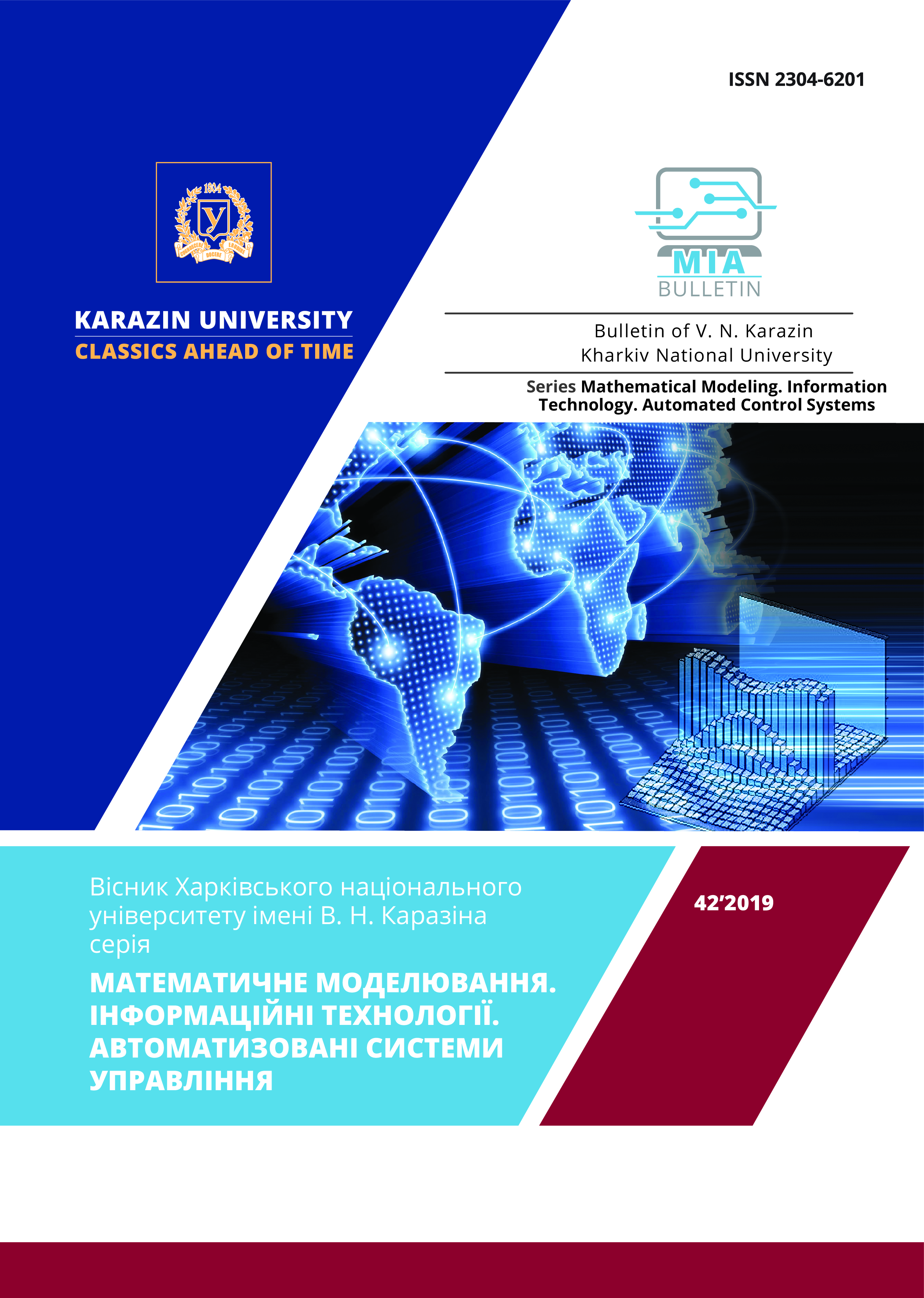The statement of the task of optimal control of the production line using the additional time of equipment operation
Abstract
The production line of an enterprise with a flow method of organizing production is considered as a dynamic distributed system. The technological route for manufacturing products for many modern enterprises contains several hundreds of technological operations, in the inter-operating reserve of each of which there are thousands of products awaiting processing. Technological routes of different parts of the same type of products intersect. This leads to the fact that the distribution of objects of labor along the technological route has a significant impact on the throughput capacity of the production line. To describe such systems, a new class of production line models (PDE-model) has been introduced. Models of this class use partial differential equations to describe the behaviour of production line flow parameters. In this article, a PDE-model of the production line is built, the flow parameters of which depend on the load factor of the process equipment for each operation. For the description of a distributed dynamic system, the PDE model of the production line was used. At the same time, the single-shift mode of operation of a production enterprise is considered as a basic mode of operation.
Downloads
References
/References
O.M. Pihnastyi and V. D. Khodusov “The calculation of a production cycle with application of the statistical theory of industrial-technical systems.” Reports of the National Academy of Sciences of Ukraine. vol.12. p.p.. 38-44. 2009. https://doi.org/10.13140/RG.2.2.36267.54562 [in Russian]
N.A. Azarenkov, O.M. Pihnastyi and V.D. Khodusov “Kinetic theory of fluctuations of the parameters of a production line”. Reports of the National Academy of Sciences of Ukraine. vol.12. p.p.. 36-43. 2014. https://10.15407/dopovidi2014.12.036 [in Russian]
J. Pinxten, U. Waqas, M. Geilen and A. Basten “Online scheduling of 2re-entrant flexible manufacturing systems.” ACM Transactions on Embedded Computing Systems, vol. 16, p.p. 1–20, 2017. https://doi.org/10.1145/3126551
F. Ancona, A. Cesaroni, G. Coclite, and M. Garavello “On the Optimization of Conservation Law Models at a Junction with Inflow and Flow Distribution Controls.” SIAM Journal on Control and Optimization, vol. 56, p.p. 3370–3403, 2018. https://doi.org/10.1137/18M1176233
T. Kaihara, Y. Katsumura, Y. Suginishi and B. Kádár “Simulation model study for manufacturing effectiveness evaluation in crowdsourced.” CIRP Annals, vol. 66, Issue 1, p.p. 445–448, 2017. https://10.1016/j.cirp.2017.04.094
V. A. Vlasov, I. A. Tihomirov and I. I. Loktev Modelirovanie tehnologicheskih processov izgotovlenija promyshlennoj produkcii. Tomsk: izd-vo GTPU, 2006. [in Russian]
V. S. Mihajlov Teorija upravlenija. Kiev: Vysshaja shkola, 1988. [in Russian]
Ju. P. Korobeckij Imitacionnye modeli v gibkih sistemah. Lugansk: izd-vo VNU im. Dalja, 2003. [in Russian]
O.M. Pihnastyi “ The task of optimal operational control of macroparameters of a production system with mass production” Доклады Национальной академии наук Украины, vol. 5, p.p. 79–85, 2006. [in Russian]https://doi.org/10.13140/RG.2.2.29852.28802
L. Tiacci “Simultaneous balancing and buffer allocation decisions for the design of mixed-model assembly lines with parallel workstations and stochastic task times.” International Journal of Production Economic, vol.162, p.p. 201–215, 2015. https://doi.org/10.1016/j.ijpe.2015.01.022
M. Kück, E. Broda, M. Freitag, T. Hildebrandt and E. Frazzon. “Towards adaptive simulation-based optimization to select individual dispatching rules for production” Winter Simulation Conference (WSC). Las Vegas, NV, USA, 2017, p.p. 3852–3863. https://doi.org/10.1109/WSC.2017.8248096
М. Falco, N. Mastrandrea, W. Mansoor and L. Rarità “Situation Awareness and Environmental Factors: The EVO Oil Production” New Trends in Emerging Complex Real Life Problems. Springer, p.p. 209–217. 2018. https://doi.org/10.1007/978-3-030-00473-6_23
V. A. Dyhta and O. N. Samsonjuk Optimal'noe impul'snoe upravlenie s prilozhenijami. Moskva: Fizmatlit, 2000. [in Russian]
D. D. Ivanenko and A. A. Sokolov Klassicheskaja teorija polja (novye problemy). Moskva: gos. izd-vo tehniko-teoret lit. 1951. [in Russian]
Пигнастый О. М., Ходусов В. Д. Расчет производственного цикла с применением статистической теории производственно-технических систем. Доклады Национальной академии наук Украины. 2009. №12. С. 38-44. https://doi.org/10.13140/RG.2.2.36267.54562
Азаренков Н. А., Пигнастый О. М., Ходусов В. Д. Кинетическая теория колебаний параметров поточной линии. Доклады Национальной академии наук Украины. 2014. №12. С. 36-43. https://10.15407/dopovidi2014.12.036
Pinxten J., Waqas U., Geilen M., Basten A. Online scheduling of 2re-entrant flexible manufacturing systems. ACM Transactions on Embedded Computing Systems. 2017. Vol. 16. P. 1–20. https://doi.org/10.1145/3126551
Ancona F., Cesaroni A., Coclite G., Garavello M. On the Optimization of Conservation Law Models at a Junction with Inflow and Flow Distribution Controls. SIAM Journal on Control and Optimization. 2018. Vol. 56. P. 3370–3403. https://doi.org/10.1137/18M1176233
Kaihara T., Katsumura Y., Suginishi Y., Kádár B. Simulation model study for manufacturing effectiveness evaluation in crowdsourced. CIRP Annals. 2017. Vol. 66. Issue 1. P. 445–448. https://10.1016/j.cirp.2017.04.094
Власов В. А., Тихомиров И. А., Локтев И. И. Моделирование технологических процессов изготовления промышленной продукции. Томск : Изд-во ГТПУ, 2006. 300 с.
Михайлов В. С. Теория управления. Киев : Высшая школа, 1988. 312 с.
Коробецкий Ю. П. Имитационные модели в гибких системах. Луганск: Изд-во ВНУ им. В. Даля, 2003. 280 с.
Пигнастый О. М. Задача оптимального оперативного управления макропараметрами производственной системы с массовым выпуском продукции Доклады Национальной академии наук Украины. 2006. № 5. С. 79–85. https://doi.org/10.13140/RG.2.2.29852.28802
Tiacci L. Simultaneous balancing and buffer allocation decisions for the design of mixed-model assembly lines with parallel workstations and stochastic task times. International Journal of Production Economics. 2015. Vol.162. P. 201–215. https://doi.org/10.1016/j.ijpe.2015.01.022
Kück M., Broda E., Freitag M., Hildebrandt T., Frazzon E. Towards adaptive simulation-based optimization to select individual dispatching rules for production Winter Simulation Conference (WSC). Las Vegas, NV, USA, 2017. P.3852–3863. https://doi.org/10.1109/WSC.2017.8248096
Falco М., Mastrandrea N.,. Mansoor W., Rarità L. Situation Awareness and Environmental Factors: The EVO Oil Production New Trends in Emerging Complex Real Life Problems. Springer, 2018. P. 209–217. https://doi.org/10.1007/978-3-030-00473-6_23
Дыхта В. А., Самсонюк О. Н. Оптимальное импульсное управление с приложениями. Москва: Физматлит, 2000. 255 с.
Иваненко Д. Д., Соколов А. А. Классическая теория поля (новые проблемы). Москва: гос. изд-во технико-теорет. лит., 1951. 480 с.




